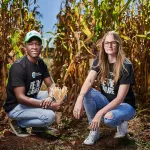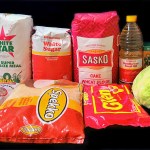Maverick Citizen: Food
Food Rescue: One possible answer to South Africa’s hunger and landfill conundrums
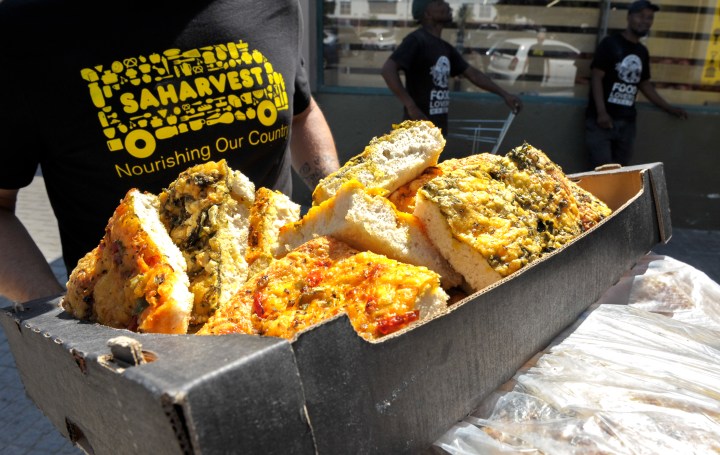
Food rescue happens all the time in South Africa on an informal level. Little bakkies pull up to local shops and take what they give away. Staff at some shops get first dibs on leftovers. Waste pickers sift through rubbish bins for food households have dumped. Internationally, however, rescuing edible food from landfills has become a serious and well-coordinated occupation. Now formal food rescue has come to South Africa.
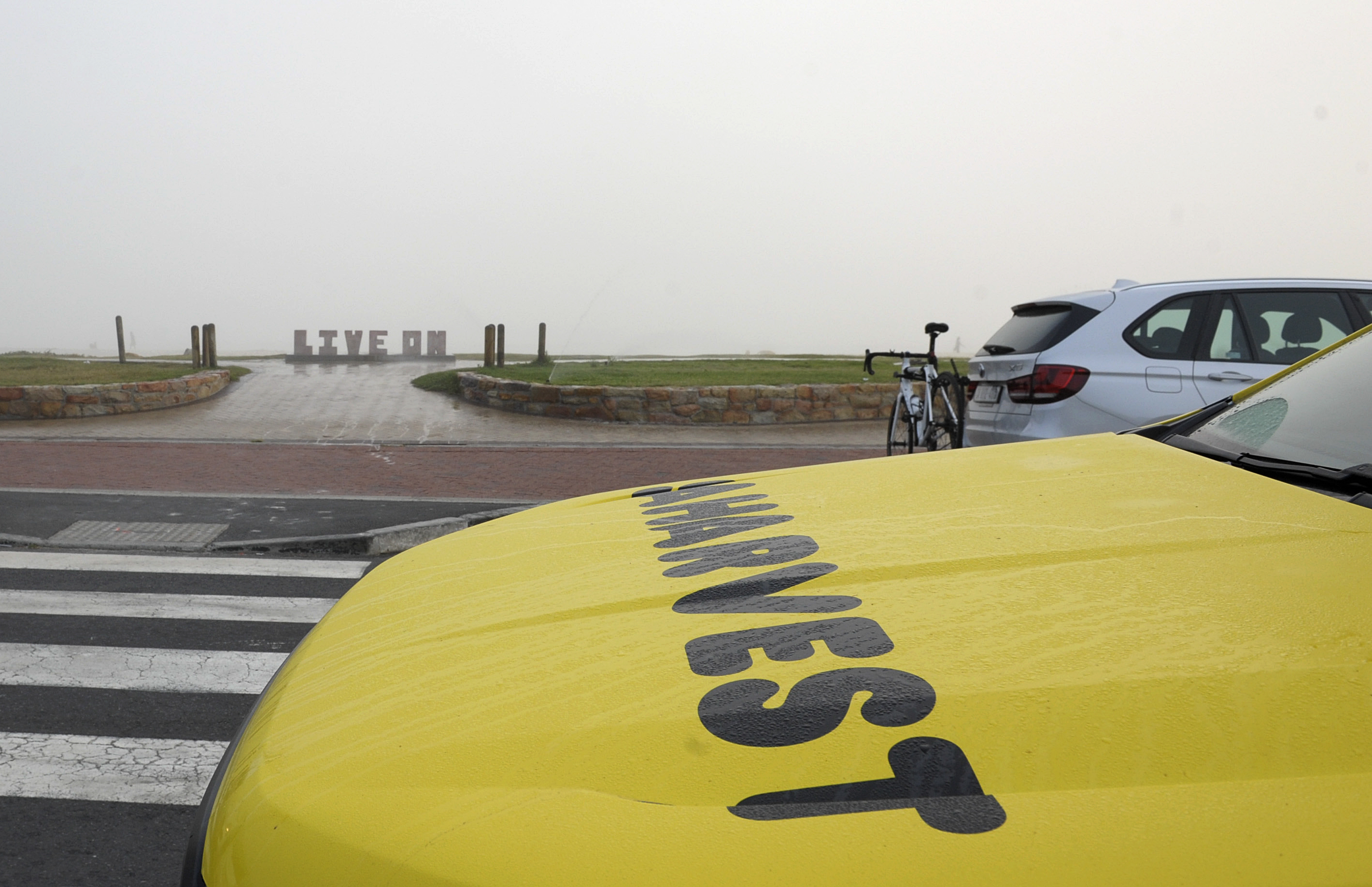
South Africa’s first formal food rescue truck saves edible food from going to waste and takes it to organisations who help to feed the hungry. (Photo: Joyrene Kramer)
It’s only 8.30am early in December and already the temperature is hovering at 24℃ in Cape Town. Tourists are waiting for the mist over the sea to clear before they head down to Camps Bay beach to rent a recliner. In Canterbury Street in the east city, early birds for the R1 lunch The Service Dining Rooms offer are squeezing into patches of shade under wind-distorted shrubs.
In Vredehoek, Andrew Wilson — who is driving the SAHarvest van for the last time before Lazola Dodo Manisi takes over in January — turns the ignition on the cheerful yellow Ford Ranger that’s been converted into a refrigerated truck and apologises for the lack of air conditioning up front.
“All the energy required for air conditioning goes into keeping the food cold,” Wilson says, jabbing a thumb over his shoulder towards the back of the truck while winding down the windows in the two-man cab.
He turns the truck towards Kloof Street.
Wilson is off to rescue food.
“Food rescue” is the practise of finding quality surplus food that is destined for the dump and taking it to organisations that provide meals for the hungry. The food is still edible, but it’s no longer sellable. In a world increasingly aware that 20th century easy-come-easy-go consumption has had measurably devastating consequences for the finite earth, food rescue is becoming a hot-button topic all along the food supply chain.
SAHarvest is the first formalised non-profit organisation (NPO) in South Africa equipped to pick up edible waste food without breaking the cold chain. This means that they are in the unique position of being able to deliver both non-perishable and perishable foods, including protein, safely.
At the Vida e Café in Kloof Street, Wilson is handed a standard transparent plastic tub, about 50cm wide and maybe 20cm deep, with a click-on lid. In it are two sandwich rolls, one small pasteis de nata, and a single cinnamon roll. He weighs the tub and records his findings, along with the date and time, on a whiteboard inside the fridge part of the van. Record-keeping is part of a strict protocol to make sure that food is delivered in the safest conditions according to the preventative food safety management systems operative in South Africa.
“We can’t give food that hasn’t been stored and transported properly to people with compromised immune systems,” Wilson explains.
The minuscule Kloof Street haul seems an inauspicious beginning.
Wilson heads over Kloof Nek towards Camps Bay, from there to Sea Point, Green Point, the Waterfront and the city centre. In some places, the pickings are slim, while in others the boxes are fairly stuffed with healthy day-old sandwiches and pastries.
At Bentley’s Bread Co. in Main Road, Sea Point, Wilson is given four crates of fancy breads — ciabatta, sourdough, rye. At a boutique hotel higher up in Sea Point where four Range Rovers and an Audi SS are being buffed by chauffeurs in anticipation of the tourists they’ll soon be driving around, an employee in neat chinos, a crisp blue shirt and a dickie bow smiles a million teeth as he hands Wilson leftover pastries and breads from this morning’s brunch at the hotel.
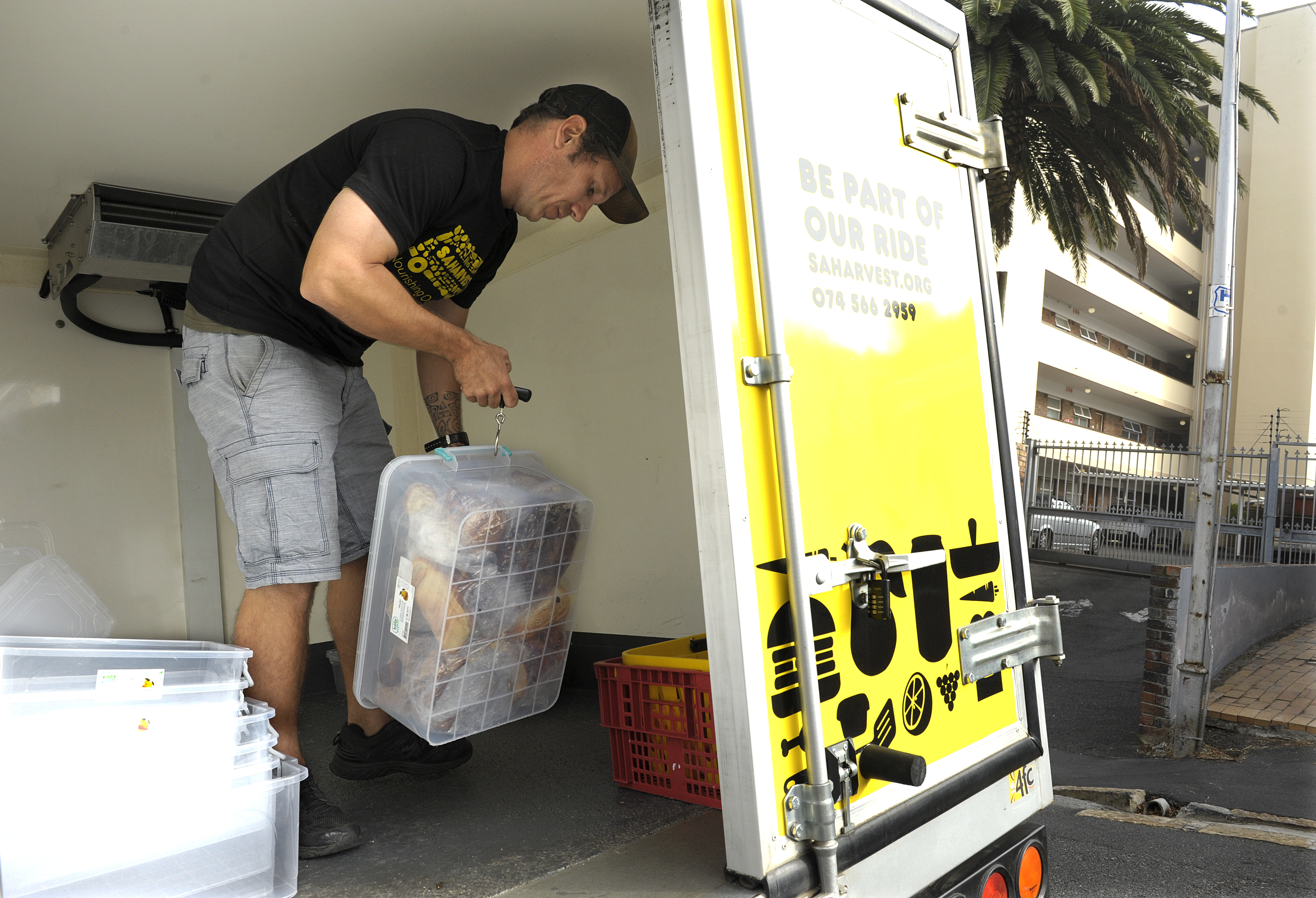
SAHarvest’s Cape Town Operations Manager Lane Ridgway weighs a tub of food received from one of many donors who want to help stop the food waste cycle. Every donation is weighed and transported to the highest safety standards in order to be delivered to NGOs who feed the hungry without breaking the cold chain.
(Photo: Joyrene Kramer)
By just after 11am, the SAHarvest truck has stopped 15 times around the city and Atlantic Seaboard. Wilson does a tally.
One hundred and twenty kilograms. Three hundred grams is considered “a meal”. Today, SAHarvest has theoretically rescued 406 meals from the bin.
It’s a mere fraction of the almost 28,000 tonnes of food that will be wasted in South Africa only today.
Wilson slams the van’s fridge doors shut. He’s just in time to deliver his haul to The Service Dining Rooms where a R1 lunch is served to the indigent daily. When the van rolls up, Karen Cain, who manages the Dining Rooms, picks two of the men from the untidy lunch queue to help Wilson bring the food inside.
The bread is stored. The sandwiches and pastries are tumbled into enormous bowls and handed out as snacks along with the rice and fish curry the mostly homeless people carry out of the building in plastic takeaway tubs.
The van has more stops. The first is to pick up food from a factory near the airport which supplies meals to a leading South African airline company. A full haul of milk, cheese and meat to be delivered to The Service Dining Rooms to store and use in the next week. The second is to meet a farmer who says he has to throw out several hundred kilograms of onions a week because they’re “imperfect”. After years of impossible aesthetic standards for fruit and veg, the world has begun to embrace “ugly food” again, but most retailers are still lagging behind. Prettier produce ends up on grocery shop shelves, while their less perfect counterparts end up in landfill. This practice pains the farmer enough to contact SAHarvest to arrange for his onions to be collected.
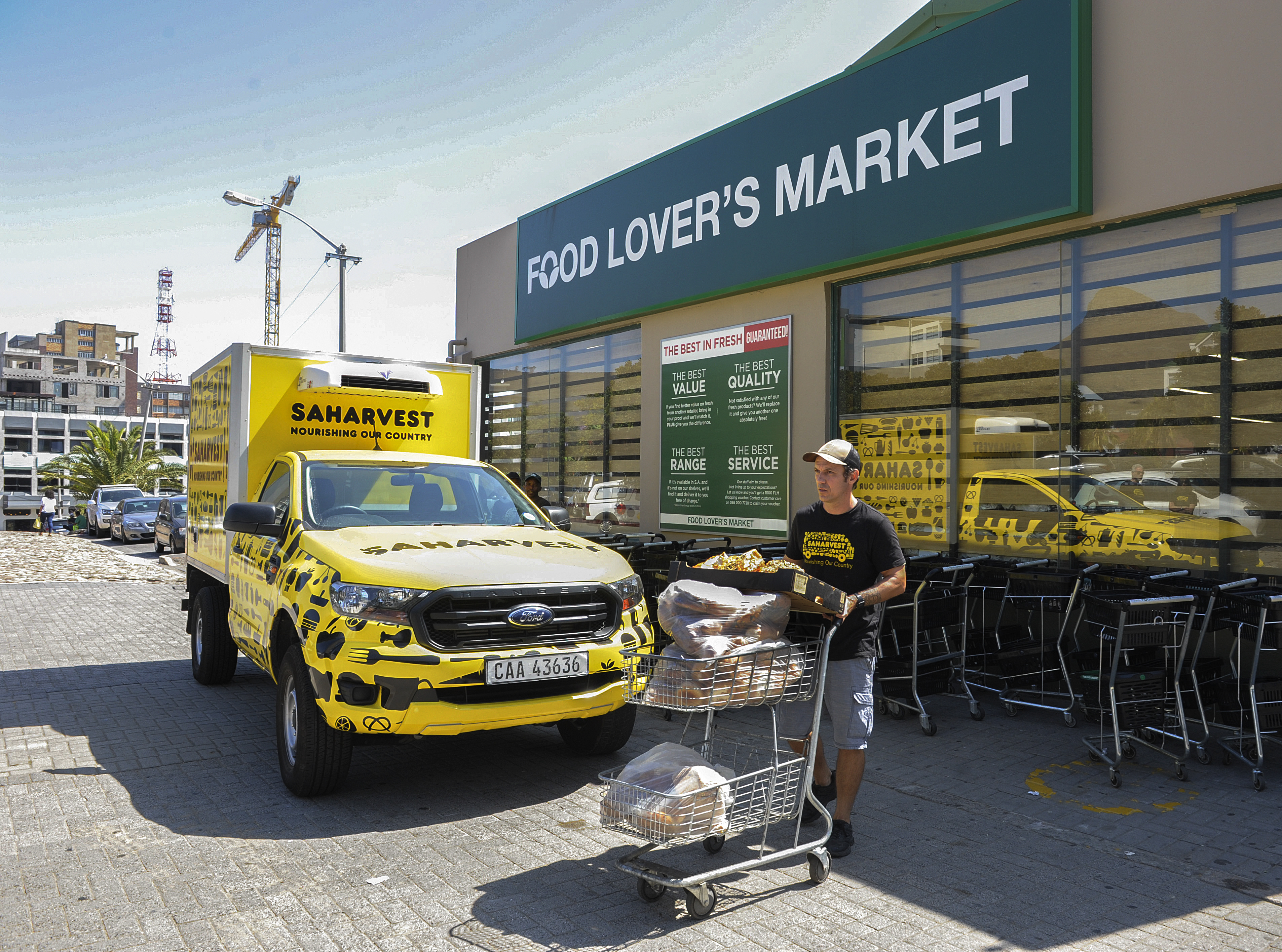
Perfectly good to eat, but not fresh enough to sell. (Photo: Joyrene Kramer)
Food waste must strike even the most unconscientious non-hungry person as not okay. There is something intrinsically repulsive about throwing edible food away. And while it’s easy enough to scrape toast crusts and rubbery egg whites into the bin without too much thought, it’s harder to remain unmoved by this number: ten million tonnes of food are thrown away in South Africa every year. Thirty-one million tonnes are produced every year. That means that a third of the food the country makes ends up in the rubbish tip. The CSIR has valued this loss at around R61.5-billion every year.
No waste is ever benign, but the waste of food seems particularly heinous, considering how many people are undernourished and how many children go to school hungry every day: almost 13 million in South Africa.
But it’s not just the rumbling stomachs that makes food waste unconscionable.
To produce food means to use resources: land, soil, water and toil. The energy wasted every year in South Africa on producing food that is not eaten is estimated as enough to power the City of Johannesburg for about four months.
In a time of wave-upon-wave of Eskom blackouts, this figure is galling.
Here’s another: the wasted water embedded in the process of producing 10 million tonnes of food that is never chewed and swallowed would fill 60,000 Olympic swimming pools. South Africa is reeling from a multi-year drought, while somewhere in the ether, 60,000 imaginary Olympic sized swimming pools are hovering like a mirage on the horizon of worst-case scenarios.
That’s at the front end of the food waste craziness.
At the back end, we find ten million tonnes of food rotting landfills around the country instead of being used to nourish the underfed. According to an article in Engineering News in 2018, 98 million tonnes of waste are deposited across South Africa’s 826 landfill sites a year. Around a tenth of that waste could, theoretically, have been eaten.
Rotting food produces methane which, the US Environmental Protection Agency says, is 20 times more damaging to the environment than carbon dioxide.
And in the middle of this cycle are the estimated one in four South Africans who enter the dark part of each day’s 24-hour cycle with a stomach shouting in hunger.

Dodo Manisi collects sandwiches and breakfast pots from a branch of Vida e Café in Cape Town. (Photo: Joyrene Kramer)
SAHarvest’s ability to make a dent in this overwhelming problem is limited. “But,” says CEO Alan Browde, “food rescue is a response to a crisis not an end solution.”
Browde came to SAHarvest through Ronni Kahn, who started OzHarvest in Australia, a highly recognisable brand that has managed to change waste laws in Australia and which now rescues 180 tonnes of food across the country every week from more than 3,500 donors. OzHarvest also opened its first food-rescue supermarket in Sydney recently, which operates on a “take what you need, give if you can” philosophy.
Browde and Kahn grew up next door to one another in Johannesburg and have remained good friends.
“My mom and Ronni were very close, and Ronni had this great admiration for my mother, who was always involved in community work. Ronnie made me promise her that when I retired, I would start SAHarvest.”
South Africa is the fourth country to use Kahn’s brand to start food rescue operations.
When Brad Banducci, the CEO of Woolworths in Australia — an ex-South African himself — heard Browde was starting up SAHarvest, he gave him R500,000 of his own money. “He knows the OzHarvest brand and, being from here, he knows the need for food rescue in South Africa,” Browde explains.
Half a million rand is what buys the food rescue van with its very particular specifications. So far, there’s one truck for Cape Town. Johannesburg’s SAHarvest truck will start rescuing food around the city of gold in March 2020, and in Hermanus a community has set up a food rescue committee and is raising funds to buy a truck to service the area.
By the time SAHarvest had been running for four months at the end of January 2020, its daily pickings had been increasing steadily and were averaging out at around 10,000 meals per month rescued.
“Food waste is an enormous and unwieldy problem and we’re not going to solve it with one or two trucks,” Browde says. “We see our role as wider than just collecting and delivering. While we will build the food-rescue side of the business, we also want to change consciousness around food and waste.”
SAHarvest hopes to educate people on food and waste issues, help communities to solve their own waste and hunger problems, and use technology to connect the people who supply food with the people who need and the people who feed.
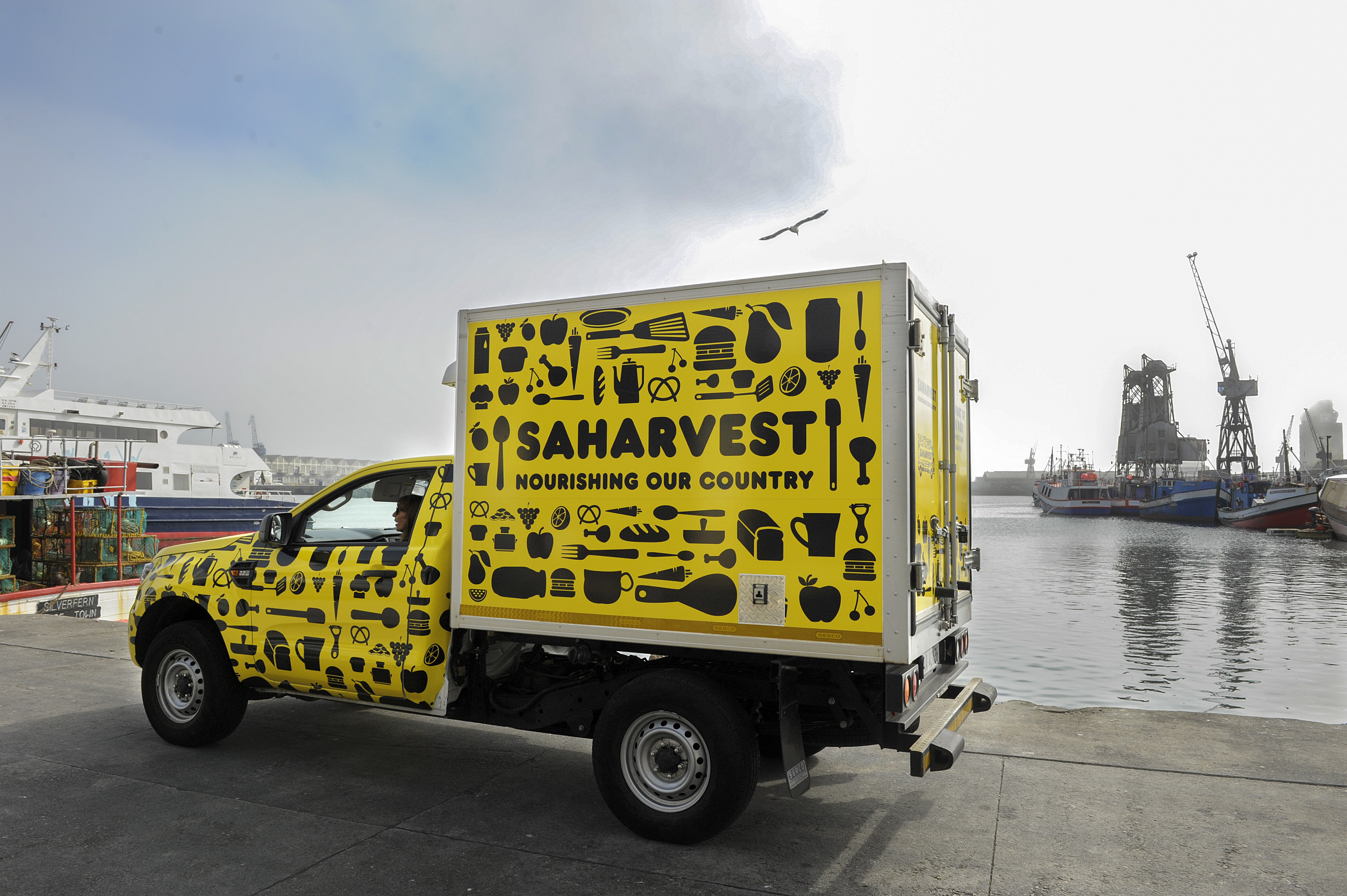
The bright yellow food rescue truck attracts interest so that, apart from rescuing food from rubbish dumps, SAHarvest employees can engage with people on the problem of food wastage, which they see as part of their remit. The truck also attracts queries from possible donors. (Photo: Joyrene Kramer)
It’s almost midday now at the Service Dining Rooms and the late diners are tagging on at the end of the lunch line. Cain and her volunteers have been serving more hungry people than usual in the past few weeks, due to the refugees living out of St Matthews Methodist Church in Greenmarket Square.
Has the food SAHarvest has been delivering helped?
Her answer is deeply emphatic.
“God, yes!” MC








